#bohio
Text
www.vintagehaiti.ht | #Haiti #Ayiti
50 notes
·
View notes
Text
Watch "Ayiti Se - official version" on YouTube
youtube
8 notes
·
View notes
Photo
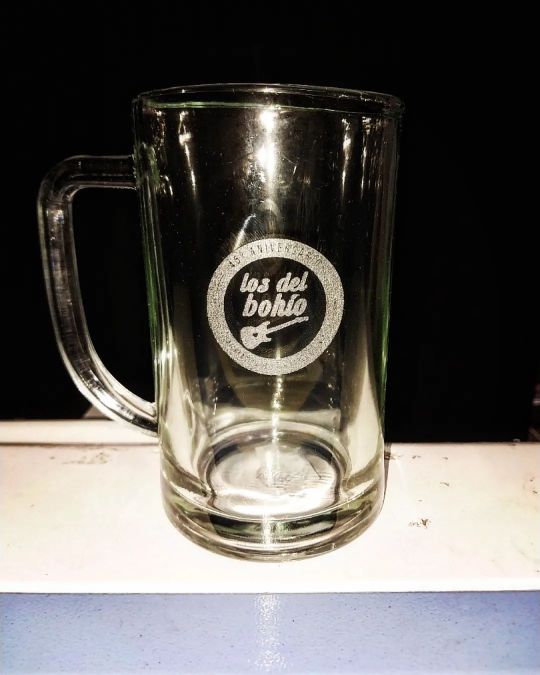
#chops #durax 500ml #merchandising #publicidad #cumbiasantafesina #losdelbohio #bohio #santafe #santafeciudad @losdelbohio.oficial #grabadolaser (en Faluen) https://www.instagram.com/p/ClJM4MRO7zO/?igshid=NGJjMDIxMWI=
#chops#durax#merchandising#publicidad#cumbiasantafesina#losdelbohio#bohio#santafe#santafeciudad#grabadolaser
0 notes
Text
Tonight's Vibe 💔✊🏿🖤🇭🇹
The people will always rise and the Heat of the island will settle all wrong doings and Mizé of Ayiti.
1 note
·
View note
Text
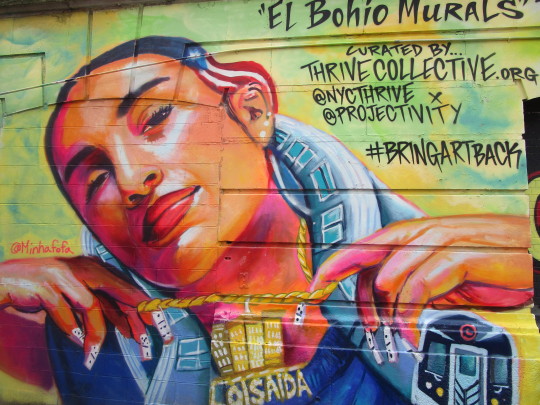
Love for Loisaida
Detail from El Bohio Murals, East 10th Street (between Avenue B and C) East Village, New York City.
21 notes
·
View notes
Text




Hello! My name is Ben and I am a Puerto Rican/Boricua Artisan. I create Puerto Rican folk art influenced with pop culture, hence the name Anime Bohio! My main work consist of Carnaval masks from Puerto Rico called Vejigante (Bey- He- Gahn-teh)! Give me a follow and hope you enjoy my art and learn something new!
#Vejigante#pochita#chainsawman#boricua#latinx#puerto rican#artists on tumblr#art#folklore#folk art#queer artist#lgbt art#anime#masks#mask
72 notes
·
View notes
Text
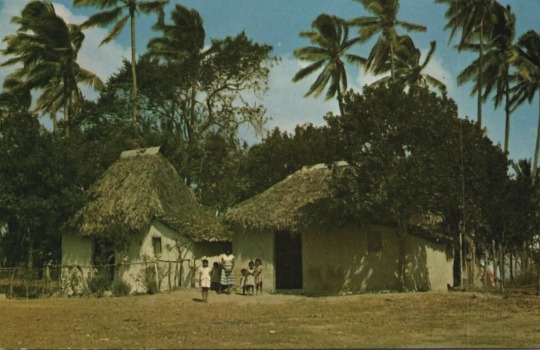
PANAMA
"The Crossroads of the World"
The "Bohio" made of mud and straw adobe has a steeply sloped roof of woven palm fronds which easily sheds the heavy tropical rains. The "jorón" a platform-ceiling up in the thatch, affords sleeping space for the large native family
12 notes
·
View notes
Text

Alejandro Piñeiro Bello
Bohio, 2022
Oil on linen
16 × 20 in | 40.6 × 50.8 cm
2 notes
·
View notes
Text
Daka Taíno y estoy aquí.
I was the blogger Triguenaista/Inaruri who was stalked and harrassed for 10+ years, while homeless, by Keyla Rivera and her anti-indigenous group “This-is-not-taino". Keyla Rivera, of Florida and Orocovis, PR, a white Puerto Rican, was mostly responsible for this racist behavior.
Since in the last ten years, I have CONTINUED to see my name thrown around as a "validated pretendian/fraud" because of the now-exposed Keyla's behavior- We're just going to need to address it. And since I was doxxed by them, and my full name has been shared with you all, I'm going to go ahead and show you some documents that that hate-group wasn't willing to show.
Let's start with a family tree- ya?
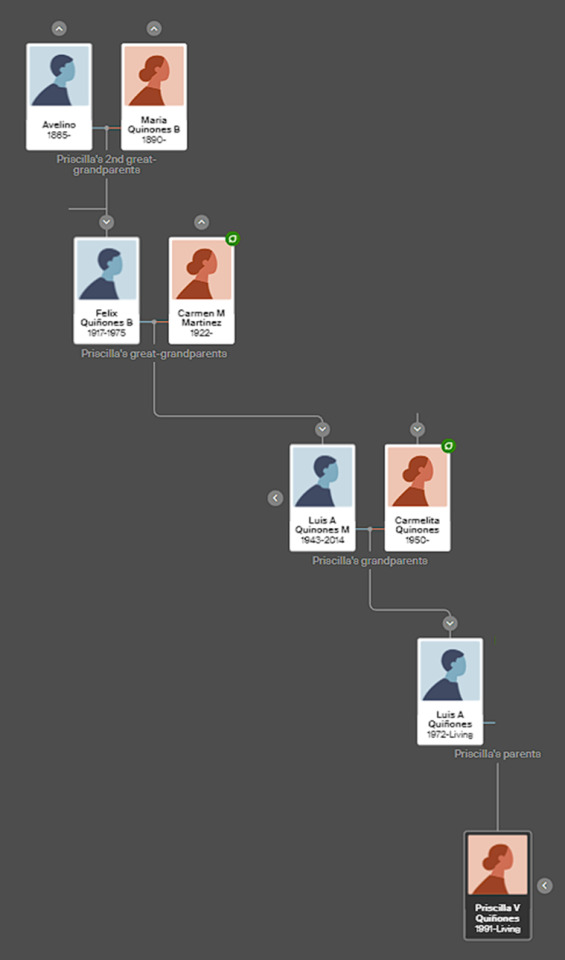

Avelino, was born into slavery in Puerto Rico, approximately 1865, in Arecibo Puerto Rico. To the best of my knowledge (and factoring in the DNA test), he was Afro-Taíno, with strong Nigerian/Western Bantu roots. As noted on the last published Registro Central de Esclavos of 1872 (page 3, 9th person recorded), he was a natural-born Puerto Rican (Natural de Oto Rico).
After abolition in 1873, like many others, Avelino was forced to continue working for 3 to 5 more years. Do Barbara Balseiro (the indicated slave owner) had a working relationship with Felix Marengo y Poggi, and was known to send slaves to work at his plantations.
Through research (1910 census), I found that Maria Baerga y Rivera De Quiñones was a "Mulatto" housekeeper for the Felix Marengo y Poggi in the 1910’s. It is likely that this is where Avelino met her daughter Maria Quiñones Baerga and developed a relationship.

They had son Felix (recorded as negro on census documents, until adulthood/WW2, where he is then recorded as blanco/brown toned (on his Draft card), who married Carmen Martinez.
This is Carmen’s Acta de Nacimiento which indicates race as “Mestiza”, clearly indicating not only direct Taíno heritage/ancestry, but a connection to an existing community as that was the only circumstance in which this term was legally used in PR when they started to write Taínos out of the country. It was and is currently illegal to list someone's race/ethnicity in PR as indigenous. Mestiza and Trigeño is the ONLY exceptions for those with concrete connections.

A Close-up:

On the naciemnto form above her mother is cited as “Vincenta/Vincenda”, from/born in Jayuya. There is a note about her grandparents in part 3. “Ambos de raza mestiza”, Ajiubro Martinez and Juana Martinez from Morovis.
According to family oral history, Carmen Martinez came from a community/family that took care of the Caguana Indigenous Ceremonial site of Utuado before the Instituto de Cultura Puertorriqueña took over with formal protections in 1955.
There may be a relationship between her and one of the 60 Puerto Rican indigenous children taken to the Carlisle Indian School in 1901. Three Martinez children were enrolled there, Provindentia, Levia, and Miguel. My best-informed guess is Provindentia Martinez may be my 2nd great-grandmother as “Vincenta” could be a derivative of the name. If it was Provendentia, she would have been the right age to have a child, settling down in PR after traveling to NY for a few years after her time at the Carlisle School, as recorded in their records. Until better clarification can be obtained, this is just speculation.
Carmen would make and maintain small bohio-like structures in the backyard of the family Utuado home (many were destroyed after Hurricane George, and the rest after Hurricane Maria), to house Semisakis and Opias.
My grandfather, Luis Alfonso Quiñones Sr. was extremely proud and vocal of our rich Taíno heritage and culture. He made sure that we knew our roots and how precious our indigenous ancestry is, and taught us all he could remember.
In terms of direct lineage, my direct Taíno lineage can be traced from my 2nd great-grandfather Avelino, my great-grandmother Carmen Martinez (whom I had the honor of knowing and having a relationship with as a child living in Puerto Rico), and my own grandfather Luis Alfonso Quiñones Sr (who I grew up with).
If "cultural connection"/"growing up in a continuously connected family" was your issue with my indigenous status- clearly I did and have the documentation to show my family's continuous connection.
If it's blood quantum/documented indigenous status- I'm between 3/8th and 7/16th according to my DNA. With the documents I have here, if Tainos were a federally recognized tribe in the US, by the BIA standards, I'd be eligible for enrollment.
And this is all without discussing how history and the laws affect lineage recording or the "Whitening of PR". My family's oral history should have been believed to start with, but now the documentation can be found online. You have your "proof" on the two points yall bring up the most.
So you see why the younger me couldn't figure out why everyone just believed the lies being told? How even now that this hate group was exposed, I don't get why I am the scapegoat for people trying to make a point. Like, I wasn't and am not an educator, nor was I trying to make money in any way (and I was homeless- I needed money and yet DID NOT ASK). I was literally just existing on this hell site and became a target. But yall handed over your cash really quick to this hate group, validated them, and were so shocked when they ended up being frauds and provided yall with NOTHING.
You all believed a white puertorrican that BIPOC's could not be trusted to be indigenous (look at the list, it is EXCLUSIVELY Black and Brown peoples and anyone who stood up for them. It wasn't a "frauds list" until after we all left the platform. That was added AFTERWARDS. And yes, some of us are STILL friends because we were here for the community, not cash or fame). You continue to keep that belief every time you defend it. In the end, ya'll are just being racist and need to stop hurting an already small af community.
Taínos exists. We are here. We are NOT recognized by the US gov't yet. To imply our self-determination takes away from indigenous people is to fundamentally not understand what it is to be indigenous. And, it implies you see the indigenous status as money and not actually living people with complex needs and issues.
I'm glad the rest of the internet has unlearned what this group put into the world about Taínos, but now I'mma need yall on here to minimally stop throwing my name around. Stop it. I am exactly who I have been telling you all I am, whether you accept that or not is NOT my problem. I have the documentation, which is more than can be said about anyone yall have believed in the past.
At least I know who my people are, grew up knowing, and can live happily knowing there are people who disagree in our community because we aren't a monolithic group. Yall just need to treat us as humans.
For those reading for the history of it all- I'm glad to help. If you're trying to figure out your family's documentation- I got great info on how to find the information and who to contact. If you're looking for cultural resources- tainolibrary is LITERALLY the best source and it's free (Note: I have no affiliation with them. I genuinely believe they are a healthy and safe resource for those seeking reconnection/validation).
For those realizing they fucked up in believing my stalker- I accept my apologies in cash.
#inaruri#triguenaista#taino#tainos#caribbean indigenous#tumblr hate groups#this-is-not-taino#Since my name keeps coming up Im going to HAVE to serve some truths#the poll spoke and I posted#Taino ancestry#Indigenous recognition#indigenous#I am so sorry to have gone off like this but I have HAD it#puerto rico history#caribe indigena
6 notes
·
View notes
Text
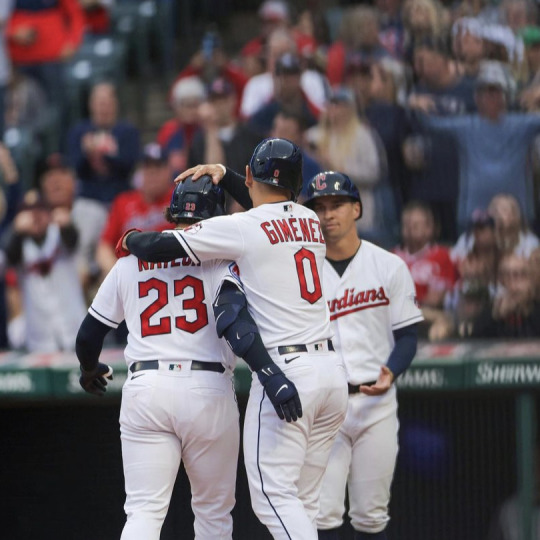

IT’S THE BOHIO CUP NOW!
-
Cleveland Guardians via Instagram
2 notes
·
View notes
Text
Art by Kervin Andre
Repost @akomicsart
December 5th 1492, the first wave of virus landed on a large island in the region of the western Atlantic Ocean that later came to be known as the Caribbean. It was inhabited by the Taíno and Arawakan people, who variously called their island Hayti (Ayiti) Bohio Kiskeya (Quisqueya). #ayitikiskeyabohio #akomicsart #ajiayabombe #tainos #arawak 🐚🪶
__________
#Notes
#Anacaona, or Golden Flower, was a #Taíno #cacica, or female #cacique, religious expert, poet and composer born in #Xaragua. Before the malevolent arrival of Christopher Columbus in 1492, #Ayiti or #Quisqueya to the #Taínos was divided into five kingdoms, i.e., Xaragua, Maguana, Higüey, Maguá and Marién. #Wiki

24 notes
·
View notes
Text




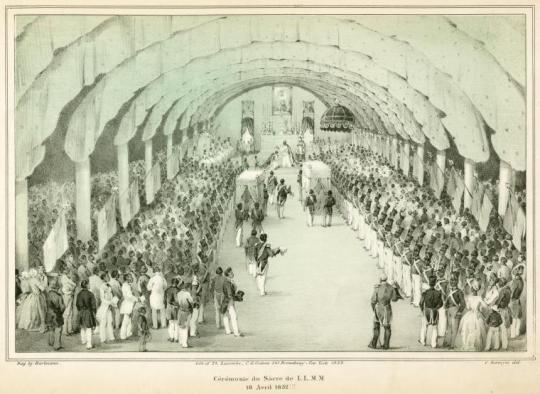
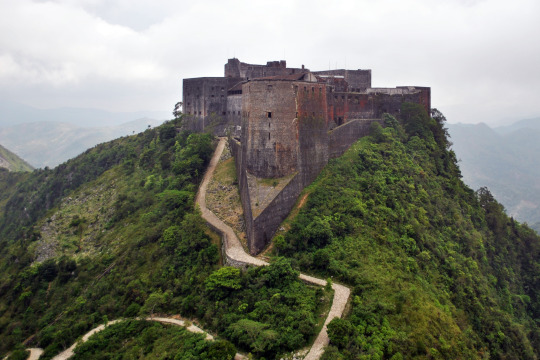
History of Haiti
The recorded history of Haiti began on 5 December 1492, when the European navigator Christopher Columbus landed on a large island in the region of the western Atlantic Ocean that later came to be known as the Caribbean. It was inhabited by the Taíno and Arawakan people, who variously called their island Ayiti, Bohio, and Kiskeya (Quisqueya). Columbus promptly claimed the island for the Spanish Crown, naming it La Isla Española ("the Spanish Island"), later Latinized to Hispaniola.
https://en.wikipedia.org/wiki/History_of_Haiti
Part of a series on the
History of Haiti 📷 Pre-Columbian Haiti (before 1492) Captaincy General of Santo Domingo (1492–1625) Saint-Domingue (1625–1804)
Haitian Revolution
First Empire of Haiti (1804–1806)
1804 Haiti massacre
Siege of Santo Domingo
North Haiti (1806–1820)
State of Haiti
Kingdom of Haiti
South Haiti (1806–1820)
First Republic of Haiti
Republic of Haiti (1820–1849)
Unification of Hispaniola
Second Empire of Haiti (1849–1859)
Haitian-Dominican Wars
Republic of Haiti (1859–1957)
United States occupation of Haiti
Duvalier dynasty (1957–1986) Anti-Duvalier protest movement Republic of Haiti (1986–present)
1991 Haitian coup d'état
Operation Uphold Democracy
2004 Haitian coup d'état
2010 Haiti earthquake
United Nations Stabilisation Mission in Haiti
Assassination of Jovenel Moïse
2021 Haiti earthquake
TimelineTopics
Military history
List of revolutions and coups d'état
8 notes
·
View notes
Text
ATV Jungle Tour in Jaco: Part 2
Paul led me down a very steep and narrow downhill driveway, paved in part and then dirt. I twice saw signs saying “ATV/bikes don’t go further” and yet we continued the descent to where the road was too narrow to ride and we parked up beside some other ATVs at the bottom. Since we had climbed so far up in elevation it was no longer hot, and the water was chilly but I went in for a dip anyway. There was an American couple there taking photos and swimming too and our guides chatted together for a while until we were all ready to leave. The American couple set off up the hill first and the girl faltered a bit and lost control of her bike for a moment which was scary to witness because I thought she might tip over backwards but Paul said “see, we don’t want to do that. You need to lean forward and get a lot of speed to get through the mud.” I followed Paul up, full throttle leaning over the handlebars knowing that it was either ride this ATV up or walk up! Once I’d started it actually wasn’t too bad, it was less scary than the steep downhill actually. Paul led us back to town as fast as possible and then returned the bike. I decided to give him a $10 tip since he did find the sloths, and I also feel obliged to tip when there is no one else on the tour. I returned to the hostel to shower and get rid of all the mud, then went back to Bohio for a late lunch of a “bohio-style” iced coffee and a muffin before checking out of the hostel and catching my 3pm bus back to San Jose. It didn’t have air con, but the window gave a nice breeze and I was able to sit for the 3.5 hour journey in backed up traffic while the bus was crammed full of other people who had to stand. It was dark when I arrived back in San Jose and it was a dodgy area around the bus terminal. My bus to the next hostel was departing in more than 30 minutes so I legged it over to a BK with an armed guard outside for a burger and clean toilet beforehand. The bus left 15 minutes earlier than expected so lucky I was already on it since I saw people getting searched by police around the corner as we pulled out of downtown San Jose. The hostel was much better than the last place in Jaco, with only one other person in my room who was very quiet and considerate. For $12 a night what more could I ask for really, although hot water in the shower would’ve been nice…
2 notes
·
View notes
Photo

Love for Loisaida
Detail of mural on old Charas community center. East 10th Street and Avenue B, East Village, New York City.
11 notes
·
View notes
Text

The chiefdoms of Hispaniola (cacicazgo in Spanish) were the primary political units employed by the Taíno inhabitants of Hispaniola (Taíno: Ayiti, Quisqueya, or Bohio) in the early historical era. At the time of European contact in 1492, the island was divided into five chiefdoms or cacicazgos, each headed by a cacique or paramount chief. Below him were lesser caciques presiding over villages or districts and nitaínos, an elite class in Taíno society.
The cacicazgo of Jaragua spanned the entire south-west of the island of Hispaniola. It was bordered on the north by the cacicazgo of Marién, south by the Caribbean Sea, east by the cacicazgo of Maguana, and west by the Strait of Jamaica. It was ruled by the cacique Bohechio (Beehechio) and was the largest of the cacicazgos. Its center was located in a place called Guava, present-day Léogâne in Haiti. It was divided into 26 nitaínos.
Bohechío was the brother of Anacaona, who was married to the cacique of Maguana; Caonabo. As such, Jaragua and Maguana had a strong alliance and would partner to ward off and attack rival cacicazgos.
The mother goddess of the cacicazgo was Zuimaco.
Image 1: The five cacicazgos (chiefdoms) of Hispaniola at the time of Christopher Columbus's arrival
4 notes
·
View notes